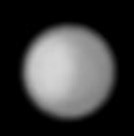2020 October 18
Observer’s Challenge – Uranus 2020

Uranus is at opposition on October 31. Lying in the constellation of Aries, it will be wellplaced for observation over the coming months. Its opposition magnitude is +5.7. Keen sighted observers might be able to see this with the naked eye if the planet is high in the sky and in very dark skies. Barring this, the planet is easily found with a small pair of binoculars or a small telescope using a good finder chart such as given in the 2020 BAA Handbook. However on opposition night itself, it will be more difficult to find due to the proximity of the Full Moon which will be a few degrees to the east of Uranus. As an aside, this is the second full Moon of October.
![]()

As not everyone has access to large telescopes, this two part observing challenge uses far more modest equipment.
The first challenge is to follow the motion of Uranus over the coming months as it slowly moves against the back ground stars. This is easily done using binoculars. However it can also be undertaken by photography, using a short focal length lens. The planet is bright enough to be captured using an unguided camera with a short exposure to minimize star trailing. A series of images taken over the coming months will show this motion. Mars may be included in the same photograph, depending on the focal length of the lens used. One event to look out for occurs on 2021 January 21, when Uranus and Mars will be close together.
The second challenge is to establish the smallest telescope size/ magnification combination that will reliably resolve the disk of Uranus. It is often said that a telescope of approximately 100mm aperture plus a high magnification will do this. What can you do?
Please post your observations on the BAA members’ pages or e-mail them into the Saturn, Uranus and Neptune section via Saturn@britastro.org
| The British Astronomical Association supports amateur astronomers around the UK and the rest of the world. Find out more about the BAA or join us. |
